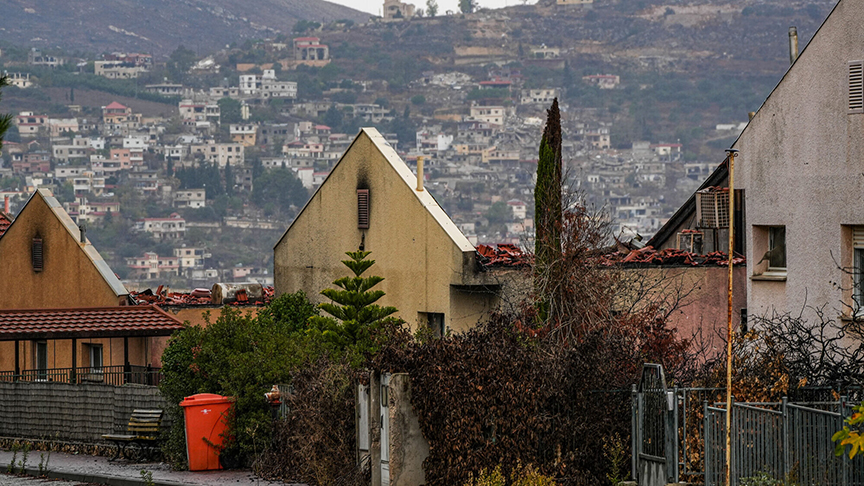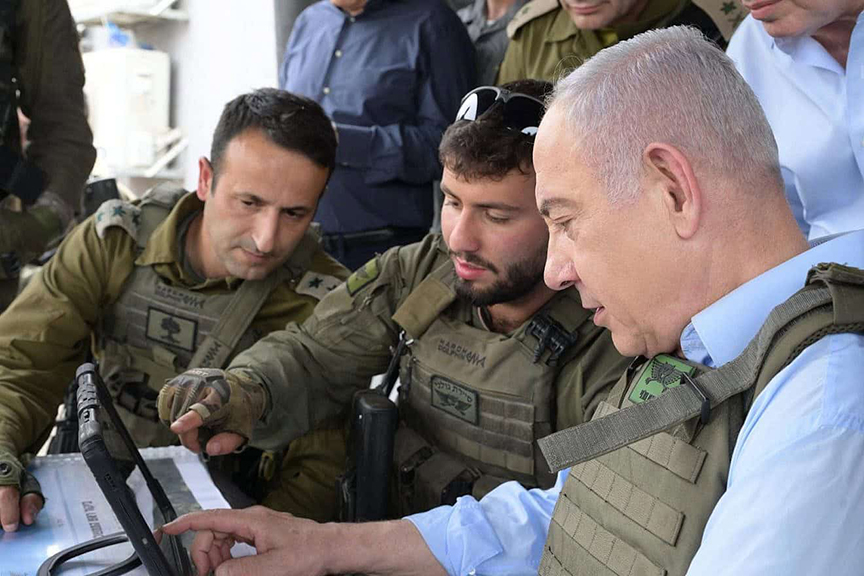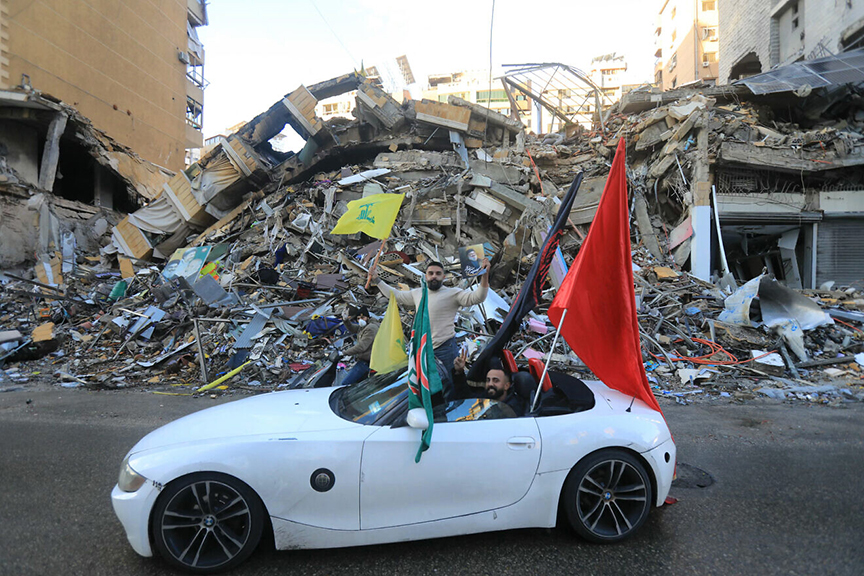With Hezbollah ceasefire, Israelis take stock of devastated north

A home that was hit by a Lebanese missile in Metula, in the Galilee panhandle, Nov. 27, 2024. Photo by Ayal Margolin/Flash90.
by Canaan Lidor
(JNS) — The war between Israel and Hezbollah has left Israel’s northernmost town, Metula, in ruins with more than 60 percent of its homes severely damaged by rocket fire.
As Israelis examine the aftermath of 13 months of fighting along the northern border, the damage in Metula reveals itself to be but a fraction of the large-scale devastation that has ravaged the country’s north, and will take months or years to repair at great financial cost.
Beyond the material damage, many northern residents wonder how the war will affect the demographics of the region, which has been largely deserted of civilians for over a year.
The data from Metula, collected by Israel’s Channel 12 News through drone footage and initial damage assessments, shows that the town’s Har Tzofiya neighborhood was especially hard-hit, with 75 of 100 houses being beyond repair.
Damages from the 13-month war along Israel’s northern border are estimated at 2 billion shekels, or $553 million, the report said, based on more than 20,000 claims for government compensation by residents whose property was damaged in the war. Overall in Israel’s north, some 9,000 structures sustained damage, along with 7,000 vehicles, according to data published by the tax authorities.
The structures on Metula’s HaLevanon Street (Lebanon St.) may all be beyond repair, according to Channel 12. The street is positioned directly along the Lebanese border and was therefore especially exposed to anti-tank fire.
Opposite Metula, which was established 128 years ago, were two Lebanese towns, Kafr Kila and Al-Adeisa. Hezbollah had used them as strongholds and firing positions against Metula and beyond. Israel has mostly razed both villages, along with many others like them, according to the Beirut-based International Information Company.
Israel and Hezbollah entered into a ceasefire on Nov. 27. This ended a conflict that began on Oct. 8, 2023, when Hezbollah fired rockets into Israel in solidarity with Hamas, whose terrorists had murdered some 1,200 people in Israel and abducted 250 others the previous day.
For nearly a year, Israel, which evacuated some 60,000 people from northern communities under threat from Hezbollah, employed what was widely seen as a containment policy vis-à-vis the Lebanese terrorist group. On Sept. 17, Israel remotely detonated thousands of pagers used by Hezbollah mid- and top-level commanders, in a move that analysts say severely damaged the group’s fighting capacity.
On Sept. 27, Israel assassinated Hezbollah leader Hassan Nasrallah in an air strike on his bunker, killing other top commanders alongside him. Israel proceeded to systematically eliminate the entire top echelon of the Iran-backed militia, while also striking their weapons caches and ballistic facilities.
Hezbollah launched dozens of rockets into Israel on a daily basis, but failed to shut down the economy or change the strategic balance of power in its favor. Last week, Hezbollah agreed to a ceasefire, abandoning its previous preconditions, including that Israel halt its war against Hamas in the Gaza Strip and pull back from forward positions it has taken up in Lebanon.
Israel has killed some 3,000 Hezbollah fighters in at least 14,729 strikes, most of them using airborne platforms, according to estimates by Tel Aviv University’s Institute for National Security Studies. Hezbollah has killed 127 people in Israel, mostly soldiers, in at least 3,630 attacks, according to the institute’s latest tally.
On Dec. 2, the IDF struck targets in Lebanon in retaliation for Hezbollah’s violation of the ceasefire earlier that day by firing mortars across the border. On the morning of Dec. 4, the ceasefire appeared to hold.
Under the terms of the ceasefire, Israel will maintain its positions in Lebanon as Hezbollah fighters retreat north of the Litani River, some 20 kilometers (13 miles) north of the border with Israel. The LAF is supposed to deploy between the border and the river and hold the area along with U.N. troops. Israeli forces are scheduled to pull back within 60 days of this happening.
Israel’s government has not yet ended its funding for alternative accommodations for the evacuated northerners. A handful of them have remained in their homes, including long-time Metula resident Amikam Zmirli. “We’re grounded here; our roots are strong,” he told Channel 12. But staying is out of the question for many families, facing the absence of schools and community infrastructure. Some may not return even when those amenities are restored, Zmirli said. “I wouldn’t bring children here,” he said.
Other evacuated communities, including those that sustained less rocket damage than Metula, remain largely deserted but for a largely greying hard core of residents. Yona Samhi, a resident of Shlomi (1.8 kilometers, or 1 mile, from the border) told JNS he was optimistic about the population’s return, citing the strong family bonds that link many of the town’s largely Sephardic residents.
“I have seven children and 15 grandchildren, I think. Which is not unusual for an old Moroccan Jew like myself,” Samhi, 70, told JNS with a chuckle in Shlomi. His children all evacuated from the city months ago, he said, but “I don’t see any of them just permanently leaving their folks, their homes, their town behind. I’ll bet you they’ll be back.”
Shlomi has sustained more than 100 rocket hits and is among the most heavily damaged locales, along with Kiryat Shmona, a city of some 30,000 people, and Kibbutz Manara.
In Metula, Mayor David Azoulay, too, is confident regarding the resilience of his city, which was among the first new Jewish locales established by Zionists.
Metula was founded in 1896, when the Land of Israel was ruled by the Ottoman Empire and Theodor Herzl was organizing the First Zionist Congress. Held in 1897, it produced the first major blueprint for building a national home for the Jewish People.
In an interview with Channel 12, Azoulay referenced the town’s pioneering legacy. “We will do it [rebuild Metula] with the government of the State of Israel or without it,” he said.



